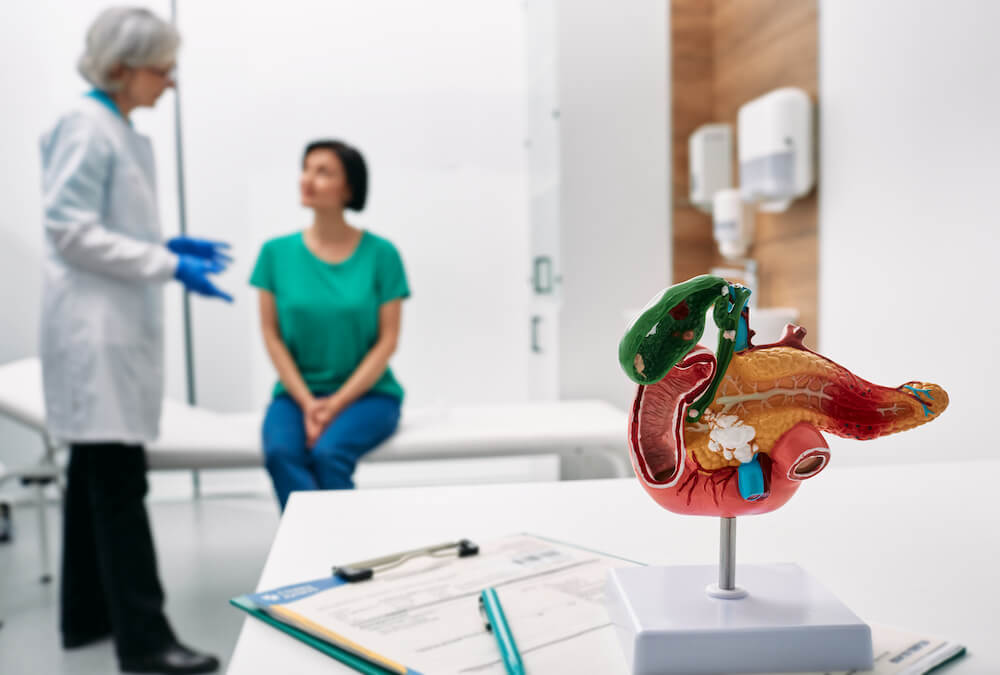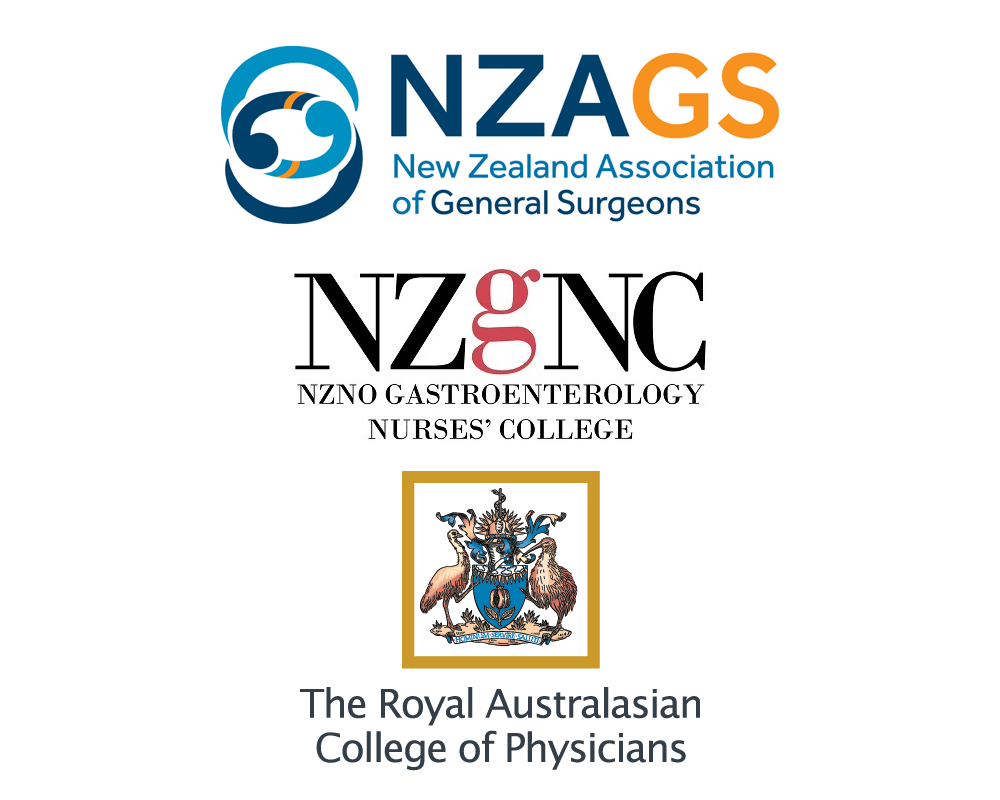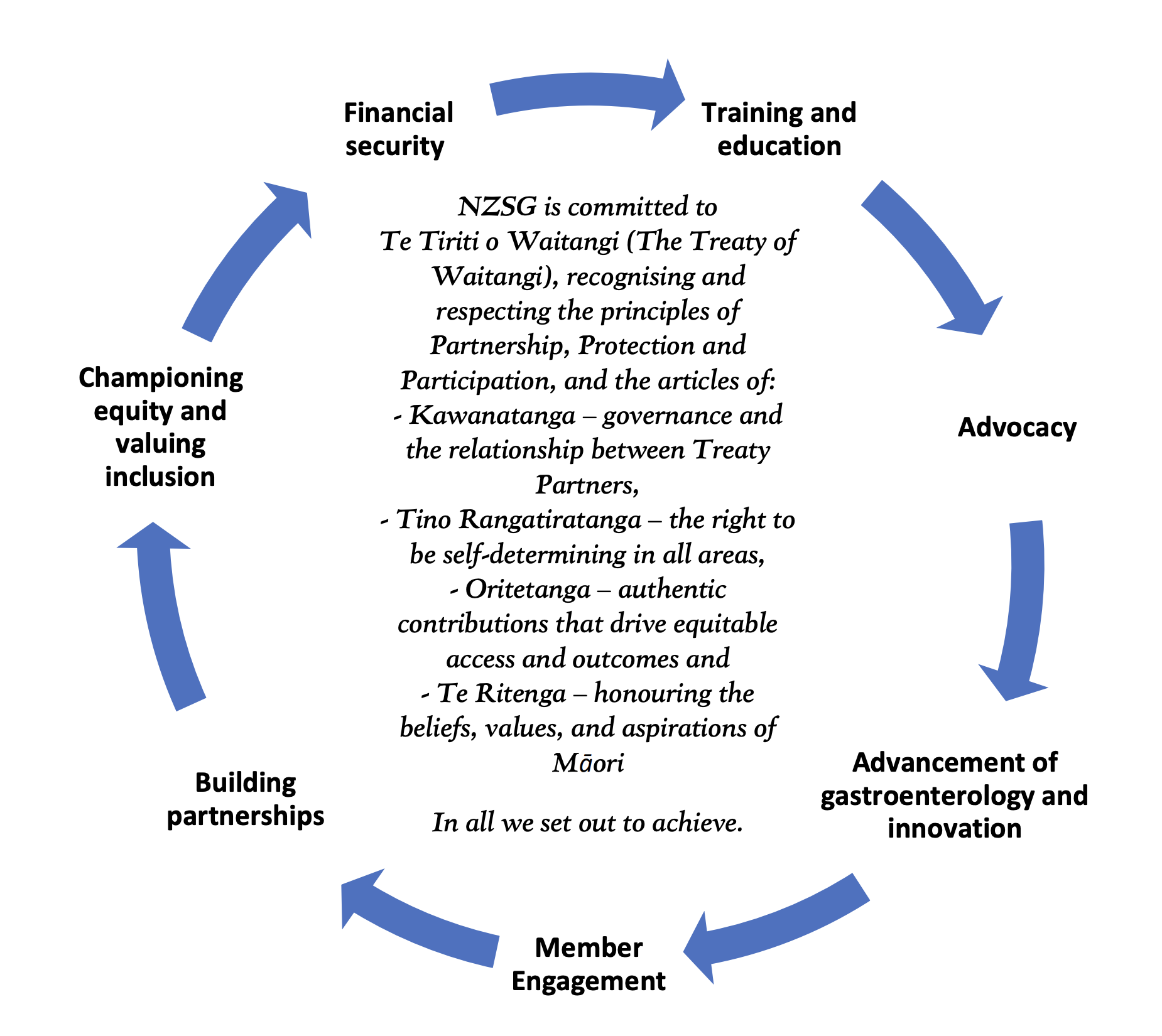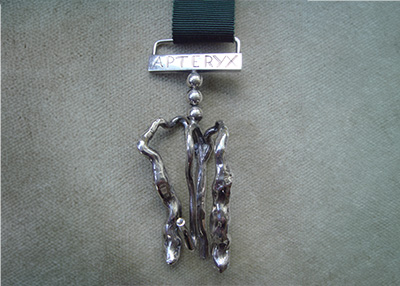About NZSG
The Society (NZSG) is a member organisation made up of professionals within the gastroenterology sector. Members include practitioners, trainees and researchers. NZSG is a member of the World Gastroenterology Organisation, Asia Pacific Association of Gastroenterology, European Croh'n's and Colitis Organisation, and the Asia Pacific Society for Digestive Endoscopy.
Members of NZSG serve on various subcommittees and Boards of international organisations as well as several national committees such as the New Zealand Conjoint Committee for the Recognition of Training in Gastrointestinal Endoscopy, the National Endoscopy Data Standardisation group and the Endoscopy Working Group.


The Society works with our colleagues at the New Zealand Association of General Surgeons, Royal Australasian College of Physicians and has a strong association with the NZNO Gastroenterology Nurses College.
The NZSG is governed by its Constitution revised from the original document in 2024 to be compliant with current legislation and business practice.
The NZSG Strategic Plan sets out the following objectives for the Society through to 2025.
- Achieving excellence in training and education;
- Advocacy
- Supporting the advancement of gastroenterology and innovation in the field
- Keeping members informed, supported, and involved in the Society
- Championing equity and valuing inclusion in the profession and treatment access
- Building partnerships with key stakeholders that align with NZSG
- Financial security, transparency & accountability

The First Meeting of NZSG
The New Zealand Society of Gastroenterology was founded during a meeting of the Royal Australasian College of Physicians held in Auckland, 16–19 February 1966. To learn more about this important please read the following.
Dr Alan Cameron was the Foundation President. The Society remains closely associated with the RACP
Written by Dr Bramwell Cook – Prior Society Archivist
The New Zealand Society of Gastroenterology was born during a meeting of the Royal Australasian College of Physicians held in Auckland, 16–19 February 1966.
A meeting was held to form a gastroenterology group in association with the College. Those present included:
- Drs A D Cameron
- G I Nicholson
- P J Scott
- D Tomlinson
- W D Troughton
- C Tasman Jones [later Clifford Tasman-Jones]
- Mrs R St C Lindop (Auckland)
- G D Kerr (Hamilton)
- R J M Coates (Gisborne)
- I G McPherson (Hastings)
- R A D Wigley (Palmerston North)
- B A Scobie (Wellington)
- Dr W B Jackson (Nelson)
Present also by invitation was the distinguished Australasian gastroenterologist and Censor-in-Chief of the Royal Australasian College of Physicians, Sir William Morrow. Apologies were received from Drs D J Gudex (Hamilton), E M McLachlan (Gisborne), P F Sheppard (Christchurch) and B P Maclaurin (Dunedin).
Dr Nicholson moved that Dr Cameron be appointed Chairman of this meeting, and Dr Jones was appointed Secretary. The record of this meeting, written by Dr Jones is as follows:
After some general discussion it was moved that a steering committee consisting of Dr Cameron, chairman, Dr Jones, secretary and Dr. Scobie should be appointed to bring forward definite proposals for a further meeting to be held in association with the September meeting of the College of Physicians in Wellington, the interim committee to have power to co-opt.
As a result of general discussion, it was felt that the newly formed group should be based on the Royal College of Physicians but that it should include surgical members of the profession and other specialist groups in the profession such as radiologists and pathologists. It should also have provision for people interested in other veterinary or biological sciences who may have something to contribute to such a group. It was felt that the meetings should be in association with the College of Physicians meetings and that the composition of the group should be such that it would be principally controlled by physicians.
The possibility of a loose association with the Australian Gastroenterology Society or branch thereof was raised. It was pointed out that members would always be welcomed in the Gastroenterology Society of Australia and there was at least some feeling that the local group should probably be autonomous.
It was left to the steering committee to decide whether the September meeting should be purely business or should include papers.
Dr Cameron ended the business section with a brief review of the history of development of gastroenterology at Green Lane Hospital.
After this a series of scientific papers were presented.
The first paper was presented by Dr. Gordon Nicholson and was entitled “The Metascopic Appearances of the Small Bowel”. This was a beautifully illustrated lecture showing the value of postmortem in furthering our understanding of small bowel villous structure.
Dr C Tasman Jones presented a paper on disaccharidase deficiencies. The histories of four patients who appeared to have a primary lactase deficiency with a fifth patient who had a primary sucrose deficiency were presented.
Dr W D Troughton presented a paper on amino acid absorption. He briefly reviewed the problems of perfusion amino acid studies as undertaken while he has been a Research Fellow at Green Lane Hospital. He was able to clearly illustrate some of the difficulties and the encouragements from such perfusion studies.
Afternoon tea was served through the courtesy of Green Lane Hospital by Mrs Rosemary Lindop.
Dr. Brian Scobie presented a paper on gastric function following gastric surgery. This paper illustrated the value of the augmented histamine test in solving post-gastrectomy problems.
After the scientific meeting, people were taken on a short tour to see the Gastroenterology Clinic equipment at Green Lane and also to see a demonstration of dissection photomicrography.
Dr Alan Donaldson Cameron became the Foundation President of the New Zealand Society of Gastroenterology.
The President's Badge of Office
The President’s Badge is a significant piece of NZSG history and is passed from each outgoing president to the incoming one at the Society’s AGM.
This presentation is a biennial event as our president’s is elected by the members to sit a two-year term in office.
In 1976, the Gastroenterological Society of Australia presented to the NZSG the President's Badge of Office as a token of goodwill.
The form of the badge is a representation of the kiwi alimentary tract, made in silver, and bearing the name Apteryx, which is the genus to which the kiwi belongs.
You can read about the presentation including the speech by Dr Brian P Billington, President of the Australian Gastroenterology Society 1976 here.
